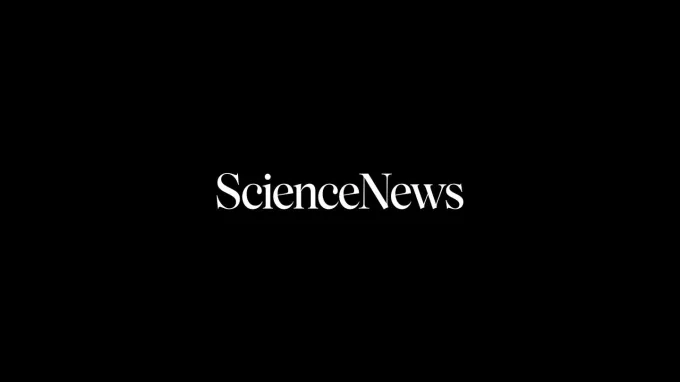Science News Magazine: Current Issue
Vol. 176 No. #7
Trustworthy journalism comes at a price.
Scientists and journalists share a core belief in questioning, observing and verifying to reach the truth. Science News reports on crucial research and discovery across science disciplines. We need your financial support to make it happen – every contribution makes a difference.
More Stories from the September 26, 2009 issue
-
 Chemistry
ChemistryLeptin leads to hamster baby boom
High levels of leptin may tell mother hamsters to invest in larger litters, a new study suggests.
-
 Space
SpaceParticle imbalance may upset the apple cart
An asymmetry that the standard model of particle physics may not account for hints at the existence of a new and massive elementary particle.
By Ron Cowen -
 Life
LifeMitochondrial DNA replacement successful in Rhesus monkeys
New procedure may halt some serious inherited diseases, a study suggests.
-
 Animals
AnimalsFruity whiff may inspire new mosquito repellents
Odors from ripening bananas can jam fruit flies’ and mosquitoes’ power to detect carbon dioxide, a new study finds.
By Susan Milius -
 Humans
HumansGirls have head start on snake and spider fears
At 11 months of age, girls quickly learn to associate fearful faces with images of snakes and spiders, a new study suggests.
By Bruce Bower -
 Humans
HumansNew genes give gut bacteria antibiotic resistance
Scientists find new genes for antibiotic resistance in common bacteria in the human gut.
-
 Health & Medicine
Health & MedicineObesity surgery’s benefits extend to next generation
Children born to women who have undergone weight-loss surgery are healthier than children born to moms who are severely obese, a study shows.
By Nathan Seppa -
 Animals
AnimalsPlay that monkey music
Man-made music inspired by tamarin calls seems to alter the primates’ emotions, a new study suggests.
-

-
 Health & Medicine
Health & MedicineMice with mutation feel the burn
Instead of becoming obese, mice with a mutation in an immune gene burn off the fat they eat.
-
 Ecosystems
EcosystemsGoogle works on a different web
Page ranking system inspires algorithm for predicting food webs’ vulnerability.
By Susan Milius -
 Chemistry
ChemistryNew bond in the basement
Scientists identify a sulfur-nitrogen link, never before seen in living things, critical to holding the body together.
-
 Astronomy
AstronomyNew images and spectra from a rejuvenated Hubble
Newly released images provide graphic evidence that repairs have transformed the Hubble Space Telescope into a brand new observatory.
By Ron Cowen -

Science Future for September 26, 2009
October 5–7 Nobel Committee announces medicine, physics and chemistry awards. Visit nobelprize.org November 1 Petitions for a chemistry-themed postage stamp are due to the American Chemical Society. See cenblog.org/2009/07/07 November 1–3 “Darwin in the 21st Century: Nature, Humanity and God” at the University of Notre Dame in Indiana. Visit nd.edu/~reilly/darwinconference.html
By Science News -

Theo Gray’s Mad Science: Experiments You Can Do at Home — But Probably Shouldn’t by Theodore Gray
Dramatic experiments, captured in color photography with step-by-step instructions, demonstrate scientific principles from the everyday world. Black Dog & Leventhal, 2009, 239 p., $24.95. THEO GRAY’S MAD SCIENCE: EXPERIMENTS YOU CAN DO AT HOME — BUT PROBABLY SHOULDN’T BY THEODORE GRAY
By Science News -

Book Review: Stories in Stone: Travels Through Urban Geology by David B. Williams
Review by Sid Perkins.
By Science News -

From baby scientists to a science of social learning
Developmental psychologist Andrew Meltzoff codirects the Institute for Learning and Brain Sciences at the University of Washington in Seattle. In the July 17 Science , Meltzoff and his colleagues published a paper titled “Foundations for a New Science of Learning.” Meltzoff recently spoke with Science News writer Bruce Bower. What does the science of learning […]
-

Desperately Seeking Moly
Unreliable supplies of feedstock for widely used medical imaging isotope prompt efforts to develop U.S. sources.
By Janet Raloff -

Hunting Hidden Dimensions
Black holes, giant and tiny, may reveal new realms of space.
By Diana Steele -

Broken Symmetry
Scientists seek mechanisms explaining development of the body’s left-right pattern.
-

-

Science Past from the issue of September 26, 1959
Many Americans suffer “television bottom” — Many Americans are suffering from a condition called “television bottom.” The medical term for the condition is coccygodynia, pain in the tail of the spine. It arises frequently from spending long periods of time before the television set.… Most patients habitually sit with a poor posture, with the lower […]
By Science News -

